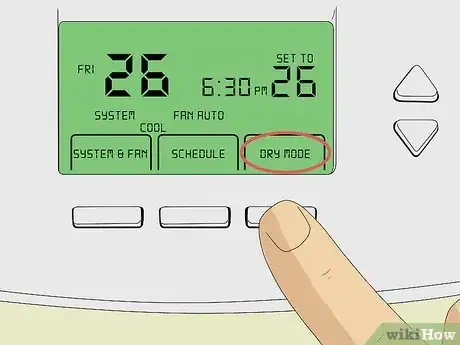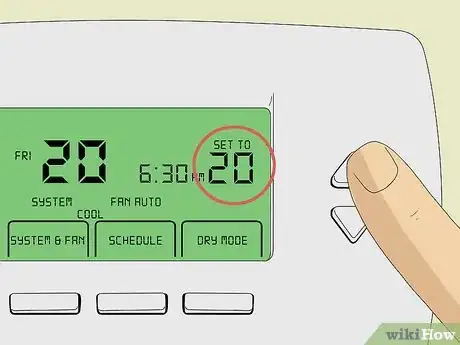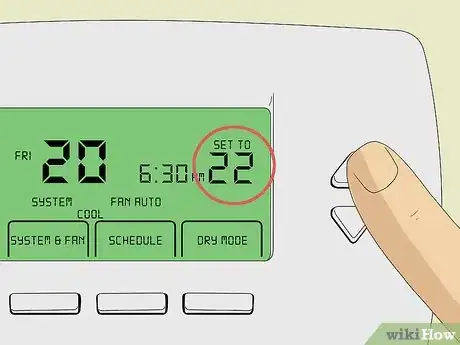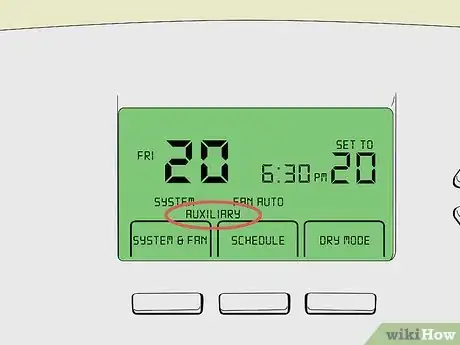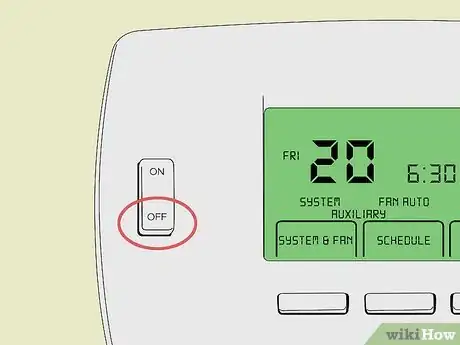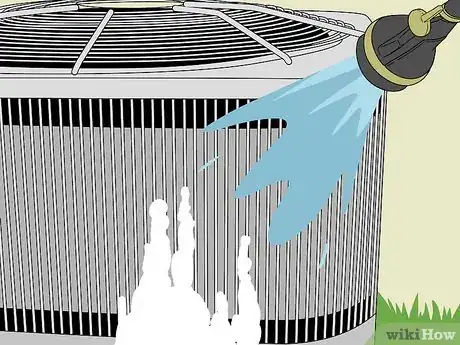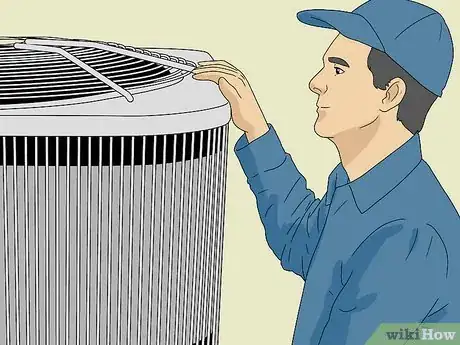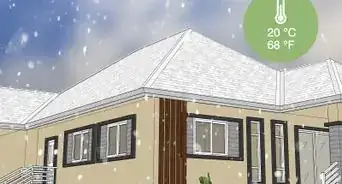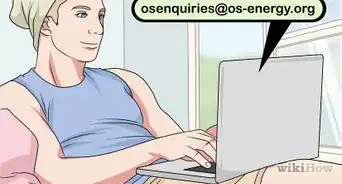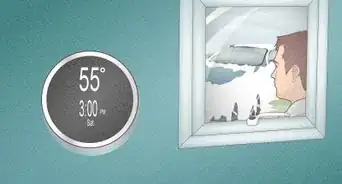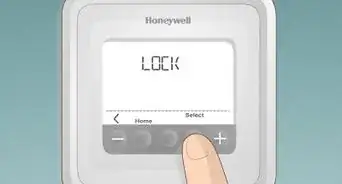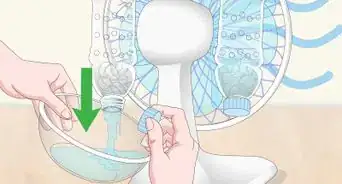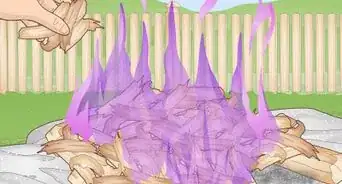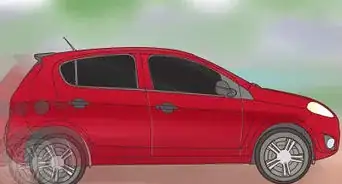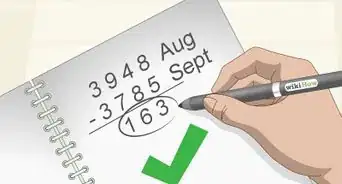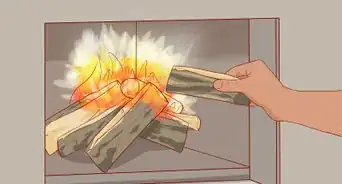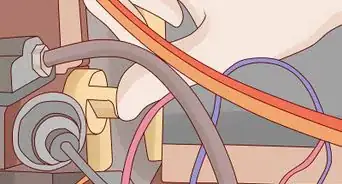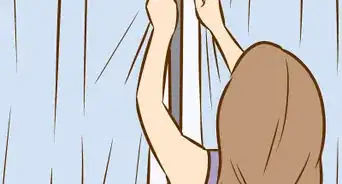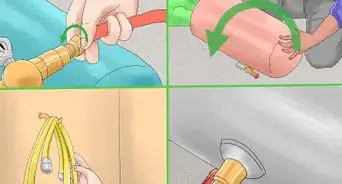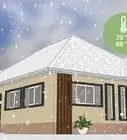X
This article was co-authored by Walter Brant and by wikiHow staff writer, Hunter Rising. Walter Brant is a wikiHow community member and contributor who has been repairing and restoring houses with over 30 years of experience. He works with homeowners to make a wide variety of improvements to make their homes more comfortable and liveable.
There are 12 references cited in this article, which can be found at the bottom of the page.
This article has been viewed 17,695 times.
Heat pumps can be used to either heat or cool a space no matter the season.[1] By using the correct settings and regularly maintaining your heat pump, you can stay comfortable year-round while being energy efficient!
Steps
Method 1
Method 1 of 3:
Setting Your Pump for Summer
-
1Keep the pump on the “cool” setting at 78 °F (26 °C) for the best efficiency. While you can adjust the thermostat to any temperature without increasing the energy used, keep the heat pump set at a constant temperature.[2]
- Keep doors open in your home to circulate the air from your heat pump.
- Set the temperature higher while you are gone so it is not continually burning energy.
-
2Turn on the dehumidifier option to remove humidity. Moisture in the air can make a room feel hotter than it actually is. Set the heat pump to dehumidify so it can remove moisture from the air inside your home.[3]
- The setting on your heat pump may refer to this setting as “dry mode.”
Advertisement -
3Use the fan only option to reduce energy use. Use the fan option if you want to only circulate the air in your home rather than bringing in cool air from the outside. This option is cost-efficient and air flow can cool down your space.[4]
- Your fan will run on a low setting once the temperature on your thermostat is reached. Cooling will restart once the temperature changes again.
- Avoid running the fan continuously if you do not have a variable-speed fan since it can degrade the performance of your heat pump.[5]
-
4Don’t use auto mode. Heat pumps set on auto will switch between heating and cooling periodically throughout the day, and it will use more energy over time. Check on the unit to ensure auto mode is turned off and that it is set on “cool.”[6]
- Auto-fan is a different setting that controls the fan speed inside your pump. This setting is okay to use.
Advertisement
Method 2
Method 2 of 3:
Operating the Pump in the Winter
-
1Set your heat pump to "heat" at 68 °F (20 °C) for the highest efficiency. Keep your thermostat at a consistent and comfortable temperature. A conventional heating system usually requires you to turn the thermostat down while you sleep or while you’re away from your home. [7]
-
2Avoid increasing the thermostat more than 2 degrees at a time. By increasing the temperature drastically, you force your heat pump to work harder. It could also make a secondary heating system run and burn more energy.[8]
- The heat pump will not heat the area faster if you turn up the thermostat.
-
3Turn on a backup heat unit if outside temperatures are below 35 °F (2 °C). Your heat pump will not have enough power to keep your home at a comfortable temperature. The setting will either say “auxiliary” or “emergency” heat.[9]
- Your energy efficiency will decrease the more you run an auxiliary unit.
Advertisement
Method 3
Method 3 of 3:
Maintaining Your Heat Pump
-
1Turn the power off on your unit before cleaning it in the spring. Start inspections or cleanings in the morning so you don’t keep your heat pump off during the warmest part of the day. Make sure you check the power on both the indoor and outdoor units before servicing them.[10]
- The indoor unit will have an easily accessible on/off switch.
- The outdoor unit of your pump will have an electrical port on the exterior wall. The switch needs to be flipped so that it is in the off position.
-
2Clean the air filters once a month.[11] Lift the lid of your interior unit and gently remove the filters. If they are covered in dust, put the filters in hot, soapy water and softly scrub them with a cleaning cloth. Rinse out the soap and let them air dry. Once the filters have dried, place them back into the heat pump.[12]
- Filters should be replaced after 6 months of use.
-
3Use a foam cleaner and hose to clean the outdoor unit every 6 months. Spray into the side vents with a foaming cleaner meant for air conditioners so it cleans the coil. Let the foam set in the coils for 5 minutes. Use a hose with a gentle stream to clear away the foam and dirt.[13]
- If you live in an area with harsh winters, clean the coil at the beginning of spring and at the end of fall before the first freeze.
-
4Have a professional service your heat pump yearly. Professional technicians will take apart and care for the areas of your heat pump that you may not be able to access on your own. They will make sure that every part runs smoothly as you use your pump.
- Contact a service technician if your heat pump indicates it's using resistance heat.[14]
Advertisement
Expert Q&A
-
QuestionDoes it hurt a heat pump to run constantly?
 Walter BrantWalter Brant is a wikiHow community member and contributor who has been repairing and restoring houses with over 30 years of experience. He works with homeowners to make a wide variety of improvements to make their homes more comfortable and liveable.
Walter BrantWalter Brant is a wikiHow community member and contributor who has been repairing and restoring houses with over 30 years of experience. He works with homeowners to make a wide variety of improvements to make their homes more comfortable and liveable.
Handyman If you don't have a variable-speed fan, keeping the pump's fan on can make your heat pump degrade more quickly, so only use the "auto" function on your thermostat.
If you don't have a variable-speed fan, keeping the pump's fan on can make your heat pump degrade more quickly, so only use the "auto" function on your thermostat.
Advertisement
Warnings
Advertisement
References
- ↑ https://www.energy.gov/energysaver/heat-and-cool/heat-pump-systems
- ↑ https://youtu.be/lnUBl2zuvss?t=2m31s
- ↑ https://www.energy.gov/energysaver/heat-and-cool/heat-pump-systems
- ↑ https://www.efficiencymaine.com/docs/Heat-Pump-User-Tips.pdf
- ↑ Walter Brant. Handyman.
- ↑ https://www.efficiencymaine.com/docs/Heat-Pump-User-Tips.pdf
- ↑ https://www.energy.gov/energysaver/thermostats
- ↑ https://youtu.be/lnUBl2zuvss?t=2m32s
- ↑ https://www.energy.gov/energysaver/heat-and-cool/heat-pump-systems
- ↑ https://www.energy.gov/energysaver/heat-and-cool/heat-pump-systems/operating-and-maintaining-your-heat-pump
- ↑ Walter Brant. Handyman.
- ↑ https://youtu.be/rXY3bJeUeNM?t=8s
- ↑ https://youtu.be/rAcmfQQS5PI?t=56s
- ↑ Walter Brant. Handyman.
- ↑ https://www.nrel.gov/docs/fy02osti/31318.pdf
- ↑ https://www.efficiencymaine.com/docs/Heat-Pump-User-Tips.pdf
- ↑ https://www.efficiencymaine.com/docs/Heat-Pump-User-Tips.pdf
- ↑ http://www.completeheating.ca/images/pdf/WGHP44.pdf
- ↑ http://www.completeheating.ca/images/pdf/WGHP44.pdf
About This Article
Advertisement

